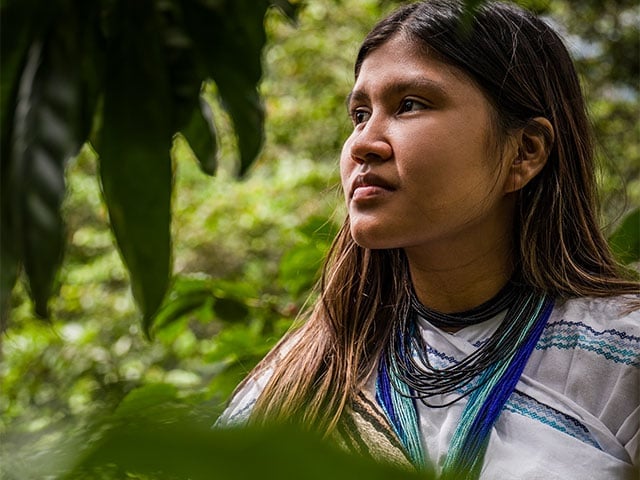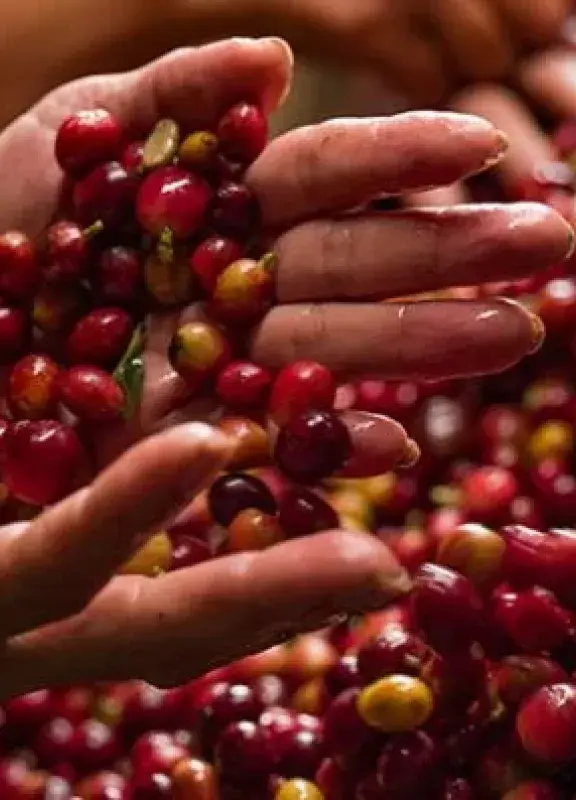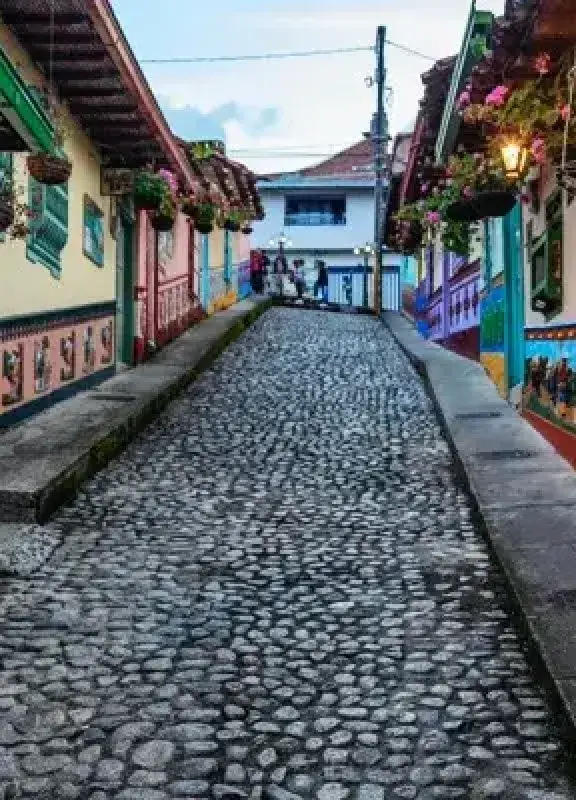Ancestral mountains: a journey through the coffee of the Sierra Nevada de Santa Marta
Not just any coffee is grown across the Sierra Nevada de Santa Marta. There, on the slopes of Colombia’s tallest
Not just any coffee is grown across the Sierra Nevada de Santa Marta. There, on the slopes of Colombia’s tallest mountain, above 1,700 meters above sea level, part of our history is cultivated: it grows, plowed by ancestral guides among yucca, cotton, and bean bushes; sheltered by banana, guineo, and malanga trees. Upon arriving in the area during the mid-18th century, coffee found its home in the hands of farmers and indigenous Arhuaco, Kogui, Wiwa and Kankuamo communities. Its aroma impregnated the branches of surrounding, sheltering trees, while the salty breeze greeted the first cherries that sprouted from the leaves.
In the Sierra Nevada we don’t just grow beans that are then sold around the world, rather, a conversation arises between nature and people, a dialogue through which each one grants and receives a bit of the other. We live for others, thanks to their selfless gift, and we’d love for you to learn some more about the coffee cultivated by the indigenous communities of the Sierra.
Sit back, get a rest from the hustle, and let the earth speak to you. The mamos know their message well and share it through every sip of the best coffee.

Coffee in the Sierra Nevada is mostly harvested by indigenous Arhuaco people (70% of coffee growers in the region belong to this community). This isn’t a mere fun fact, but rather one of great significance: coffee is a gift from the earth destined for our delight, as well as a promise we make to be at peace with nature. The Arhuaco people don’t grow coffee for practical reasons, instead, they do it because, with it, life is honored.
According to the ancestral wisdom of this community, passed down by the mamos, each plant carries its own energy, a particular way of understanding the world. In our communion with them, planting them, creates a dialogue: we understand ourselves as part of a greater natural system, brimming with life, of which we are just another being. We are neither masters nor owners of anything; we simply share a place in the midst of creation.
Coffee, for the Arhuacos, is a promise of life, a gesture to please the earth and return its warmth. They take care of it: they sow life across plateaus and plains, across mountains and valleys. They give back to her a part of all she has given them and us. Behind coffee lies the history of the eternal dialogue between human beings and natural life, and for this reason it is paramount to respect certain rituals. As with any exchange, there are certain norms and principles that must be adhered to. The first consists of making a pagamento, this means, a way of asking the mamo to mediate with nature. Only nature can authorize us to use its resources, its energy for harvesting and sowing. In other words, there is no coffee without nature’s consent.
The second gesture has to do with our disposition when we speak with nature. At the moment of picking the cherries, all those who do it must feel joy and gratitude with the ground and its offerings. There’s no room for sadness or apathy in the face of the miracle of life—one should smile. To smile is to be grateful for the blessing the soil grants us.
These are just two rites or practices that are part of the ancestral knowledge of the community. We don’t pretend to cover them all, after all, such wisdom can’t be explained away in a few paragraphs. However, there are a couple more we’d like to share with you.

Coffee of the Sierra doesn’t grow alone, it does so along with other shrubs and native trees. This has two explanations: first, solar luminosity is quite high in this region, too much so for coffee shrubs. This makes shade cultivation one of the coffee growers’ specialties. Second, there’s the need to avoid undermining the space of other living beings and plants. Ancestral wisdom conceives that coffee is but a life among countless others—it dialogues and coexists with them. If we cultivate to get closer to nature, we should not cut the ties that unite forms of life with each other.
As of today, at least 93% of crops are grown in the shade. Among the most-planted varieties are Typical, or “Criolla” as it’s dubbed in the region, Caturra, Castillo, Cenicafé-1, Tabi, and Colombia. Thanks to its tradition and unique qualities, coffee of the Sierra Nevada is certified by a designation of origin. This distinction is granted to products that, thanks to their specialty and distinction, provide a unique experience.
A flavor like this can only be achieved thanks to nature; by listening to it and pleasing it for generations, by filling the land near the sky with vegetation, by listening to the sea and letting its breeze caress the crops. A coffee that found its home on the world’s tallest sea-side mountain, carefully grown through ancestral beliefs, can’t help but be special, which is why our Sierra Nevada coffee is a delight you simply can’t pass up. Behind its magic lies the gift of the mamos and their ancestral wisdom, in addition to the natural wealth that only a mountain lulled by the sea breeze can provide.

 Welcome, you are in
Welcome, you are in 













